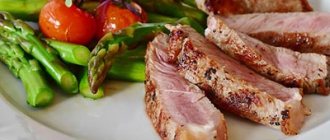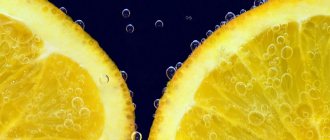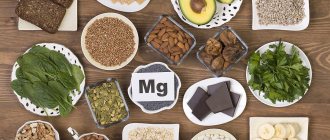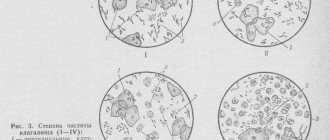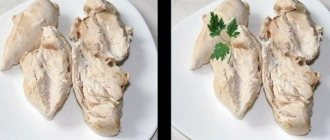Flakes
Corn flakes are considered a hearty and healthy breakfast, but they, like any other flour products, stimulate the production of insulin in the body, which provokes a feeling of hunger. There is another reason that cereal does not give a feeling of fullness - nutritionists say that the less water a product contains, the lower its ability to satisfy hunger. Despite the fact that the cereal contains a large amount of fiber and vitamins, the desire to eat again after such a breakfast will return quite quickly. But oatmeal can be an excellent alternative.
What foods cause appetite?
In order to eat food properly and not face unpleasant consequences, you need to know which foods provoke hunger. For adults and children, the food list will vary slightly.
What foods increase appetite in adults?
The diet of an adult is the most diverse - in the absence of food restrictions, it includes almost all food groups. Increased secretion of gastric juice is promoted by:
- hot spices and seasonings - ginger, black pepper, garlic, coriander and others;
- flour products - wheat bread and rolls, pastries;
- sweet dishes - white and milk chocolate, sweets, ice cream, marshmallows and cookies;
- sweet and sour fruits, especially apples and dark grapes;
- vegetables, especially cabbage, Korean carrots, red and yellow bell peppers;
- drinks high in acids and sugar.
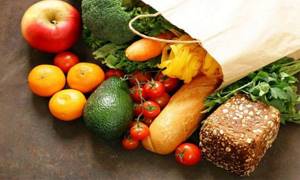
Vegetables, fruits and bread are the healthiest foods to increase appetite in adults.
Some foods, for example, sweets and soda, are considered rather harmful and should be consumed in small quantities. But others are primarily beneficial. For example, foods that increase appetite in older people, such as vegetables and fruits, can help prevent constipation.
What foods increase appetite in children?
In children, the same foods increase the feeling of hunger as in adults, but at the same time you need to approach the children's diet with special attention. Even to improve a child’s appetite, one should not offer hot seasonings; spices should be excluded from the diet, as they will harm the child’s body.
Healthy foods are good for increasing your child's appetite, for example:
- sour berries or freshly squeezed juices based on them;
- apples;
- fresh carrots;
- cabbage, cauliflower and white cabbage.
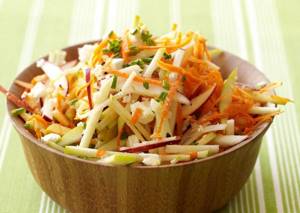
You can improve your child’s appetite with cabbage, apples and carrots
If the child is not allergic to bee products, honey can also be offered to stimulate hunger. Royal jelly, bee bread and propolis in its composition gently enhance digestion.
Attention! If a child complains of poor appetite, then you should consult a pediatrician before introducing certain dishes into the diet. In some diseases, stimulating digestion can be harmful.
Sweets
Foods containing large amounts of sugar and carbohydrates provoke the production of free radicals, which interfere with the functioning of ghrelin, the hormone responsible for the feeling of fullness. As a result, after eating sweets, the feeling of hunger appears much earlier than if you abstained from sweets. In addition, sweets cause so-called “emotional hunger” - even if your stomach is still full, your brain will receive a signal that you are not full yet. Sweets in excessive quantities cause food addiction.
Delicious appetite provocateurs
Have you noticed that some foods don't make us feel full? Moreover, after them you want to eat even more! They slow down your weight loss and contribute to the gain of extra pounds. What should you exclude from your diet for a beautiful figure?

Enemies of diet. What foods prevent you from losing weight?
White bread
Modern store-bought bread contains the entire periodic table. Various substances are added to it so that it is stored longer and retains its taste unchanged. Don’t forget about flour made from refined grains, that is, without the most useful bran part - fiber. Its absence leads to the fact that such a product instantly and sharply increases the rise in blood sugar, and after a few hours you want to eat again. The sharper the sugar level rises, the faster it falls, which means it provokes appetite.
Fresh juice
Just a few years ago, freshly squeezed juice was all the rage. However, nutritionists say that freshly squeezed juice is a real “sugar bomb”. A glass of juice is a huge amount of sugar and almost complete absence of fiber, which is found in the pulp of fruits and vegetables. Drinking juice causes a sharp rise in insulin and its subsequent sharp drop, leading to an acute feeling of hunger. If you do not run several kilometers after this product, then most likely the excess sugar will go into adipose tissue. The best replacement for juice is a smoothie. However, they should not be abused either.
Alcohol
Everyone knows that when drinking alcohol, it is more difficult to control willpower and refrain from eating goodies at the table. However, this is not the only danger. According to research, alcohol provokes an increase in the level of the hormone ghrelin in the blood, and it is this hormone that is responsible for increased appetite and a dulling of the feeling of fullness. Plus, alcohol “washes out” carbohydrate reserves, causing the desire to immediately replenish them, naturally, with the most unhealthy foods, such as nuts, chips, sweets, and buns.
Monosodium glutamate – flavor enhancer
Monosodium glutamate is generously added to almost all products of the modern food industry: cheeses, yoghurts, dairy desserts, sausages, almost all confectionery products, baked goods, fast food. This supplement is a controversial product. Eating it makes your receptors feel “sharper”, which means you eat more. Plus, glutamate causes addiction and the need to make choices over and over again in favor of products with flavor enhancers. Add here the fact that under the influence of monosodium glutamate, the production of leptin, the satiety hormone, is hampered. Read the packaging and avoid E621.
Sweeteners
Regardless of the types, they are all dangerous. Your brain receives a signal that it will now digest them and get the calories and substances contained in the sugar, but this does not happen. Eventually the brain will demand compensation. Like the whole body as a whole. Experimenting with sweeteners can lead you to diabetes. Remember, the best drink for losing weight is not juice, not soda with sweetener, but water! It is possible with gas, but without any additives.
Cereals and other breakfast cereals
An insane amount of sugar in the morning not only increases your appetite throughout the day, but also contributes to apathy. In addition, a sharp short-term jump in insulin leads to its subsequent drop, and, consequently, to the fact that at lunch you will eat much more food than you need.
Salted and pickled foods
Like monosodium glutamate, salt and vinegar increase the sensitivity of receptors, which means they increase appetite. Many of you have probably noticed that when you have a craving for salty foods, you can eat a whole jar of pickled or pickled cucumbers, or tomatoes, but eating a kilogram of fresh ones is not so easy.
Mayonnaise, mayonnaise sauces, ketchup, mustard and other additives
Mayonnaise, beloved in our country and added everywhere, is a very dangerous product.
A huge amount of fats and additives make it a real enemy of those losing weight. Just like any other sauce like ketchup or mustard, which changes the taste of a dish, sauce tricks the brain and forces us to eat more. If you want to lose weight faster and more effectively, try to prepare the most natural products with a minimum of “add-ons”. This way you won’t have to worry about “hunger attacks” just a few hours after eating! Articles
Medical Encyclopedia - Appetite
Appetite is the emotional expression of a person’s nutritional needs. Appetite arises based on the state of hunger (see).
The most distinct changes occur in the activity of the digestive organs. The secretion of saliva and gastric juice (“appetizing” or incendiary, in the words of I.P. Pavlov), as well as peristaltic movements of the stomach and intestines, are observed. Increased activity of the digestive organs, in turn, increases the sense of appetite.
The manifestation of appetite depends on the stimulation of the food center and other structures of the central nervous system, as well as on the general condition of the body. Positive emotions caused by a pleasant environment, especially associated with eating, increase appetite, strong negative emotions (fear, disgust) suppress it. Excitation of a number of nerve centers (for example, vomiting, urination, defecation) has the same inhibitory effect on appetite. In humans, appetite often arises under the influence of conditioned stimuli associated with food intake: the environment, smells, appearance of food, time of its consumption. Different people experience individual fluctuations in appetite, which depends on the type of work, rest schedule, mode and environment of food intake, and its composition.
Changes in appetite are observed in various general diseases (infections, metabolic and neuropsychiatric diseases) and in diseases of the digestive tract, both in the direction of a decrease in appetite to its complete absence (anorexia), and in the direction of an extreme increase in appetite, called polyphagia. Treatment of appetite disorders - see Anorexia, Polyphagia
Appetite (from Latin appetitus - desire, desire) is an emotional expression of the body's need for nutrients. Appetite is closely related to the state of hunger (see). However, if the state of hunger, as a rule, is accompanied by emotions of an unpleasant nature, then, in contrast, the emotional manifestations of appetite are always determined by the pleasant sensation of taste of those nutrients that the body needs. Often, appetite is also understood as the degree of that positive emotion that directly accompanies eating. Appetite can arise not only in the presence, but also in the absence of real food irritation under the influence of environmental stimuli alone.
Unlike hunger, appetite is not innate, but is acquired in individual life. In a newborn, an appetite is formed only after his feeling of hunger is satisfied one or several times by eating. As a result, the unpleasant emotions of hunger begin to be accompanied by pleasant ideas about future food irritation, which from a biological point of view is a powerful factor contributing to the search for food and its better absorption by the body.
Appetite is always formed on the basis of certain physiological mechanisms, which are quite clearly objectively manifested both in changes in the activity of special nervous formations, in the activity of numerous vegetative organs, and in motor reactions (purposeful movement towards food, contraction of facial muscles, etc.). The most demonstrative changes in the functioning of the digestive organs. As a rule, appetite is accompanied by increased secretion of saliva and gastric juice (“appetizing” or “igniting” juice according to I.P. Pavlov).
The emergence of appetite is closely related to the activity of the food center (see Digestion). Numerous studies have established that the central point of the complexly organized food center is the hypothalamic region. There is an idea that excitation of the hypothalamic structures of the food center due to ascending activating influences selectively involves special cortical synaptic formations and thereby determines selective eating behavior. Appetite as a subjective manifestation of excitation of the food center is determined by the activity of not only the nervous elements of the cerebral cortex, but also the limbic system of the brain. Since appetite is closely related to the state of hunger, one of the main reasons for its occurrence is the automatic irritation of special receptor formations of the hypothalamus with blood depleted of nutrients (“hungry blood”). However, nervous factors also play a significant role in the emergence of appetite, which can act on the food supply - from the digestive organs, and “from above” - from the cerebral cortex.
There are two known forms of manifestation of appetite: 1) general (emotional reaction to food in general); 2) selective (the body’s reaction to certain types of food). As a rule, selective appetite occurs due to the lack of certain nutrients, acids, salts and vitamins in the internal environment of the body. This type of appetite is often observed in children, pregnant women and patients with malignant tumors. In some cases, selective appetite can turn into the form of perverted A. (pica), when the body begins to feel the need for substances that it usually does not use (kerosene and even metal objects). Often the cause of perverted appetite is neuropsychiatric diseases.
Appetite disorders can be conditionally divided into two groups: 1) anorexia (see) - decreased sensations of hunger and appetite; 2) bulimia - a sharp increase in hunger and appetite. Appetite disorders are observed in brain tumors, in a number of endocrine diseases (diabetes mellitus, thyrotoxic goiter, Simmonds' disease, etc.), as well as in some functional diseases of the central nervous system (hysteria, psychosis, etc.). Often the causes of A. disorders are diseases of the gastrointestinal tract (gastritis, enteritis, hepatitis), as well as vitamin deficiencies. Various diseases are often accompanied by A. disorder, which may be one of the symptomatic signs.
Appetite can be suppressed by various external influences and experiences: pain, fear, anger, tense anticipation, etc. Therefore, the state of A. can characterize the state of a person. Good A. most often indicates his physical and mental well-being. Under normal conditions, increasing A. can be achieved by following a strict diet, improving the quality of food preparation, introducing bitterness and spices into the diet that improve the taste of food. For the beneficial effect of A. on the digestive process, it is necessary to exclude all distractions (haste, reading, etc.) during meals. Neglect of appetite is often the root cause of many so-called neurogenic diseases of the gastrointestinal tract. See also Motivations.





